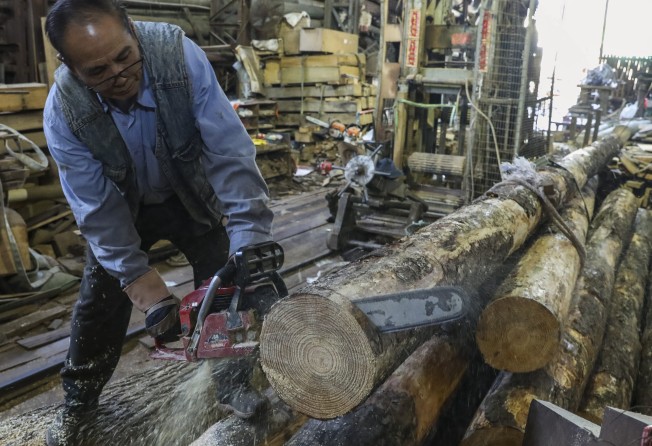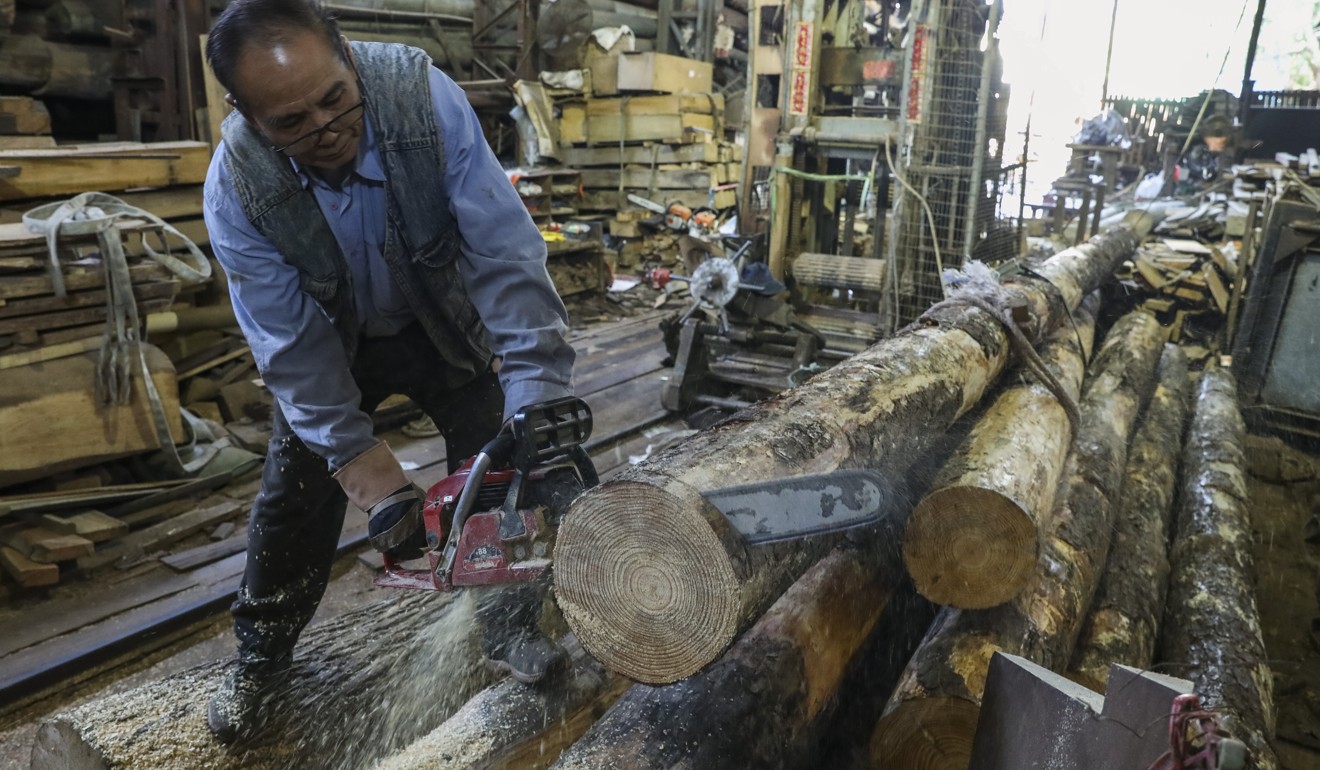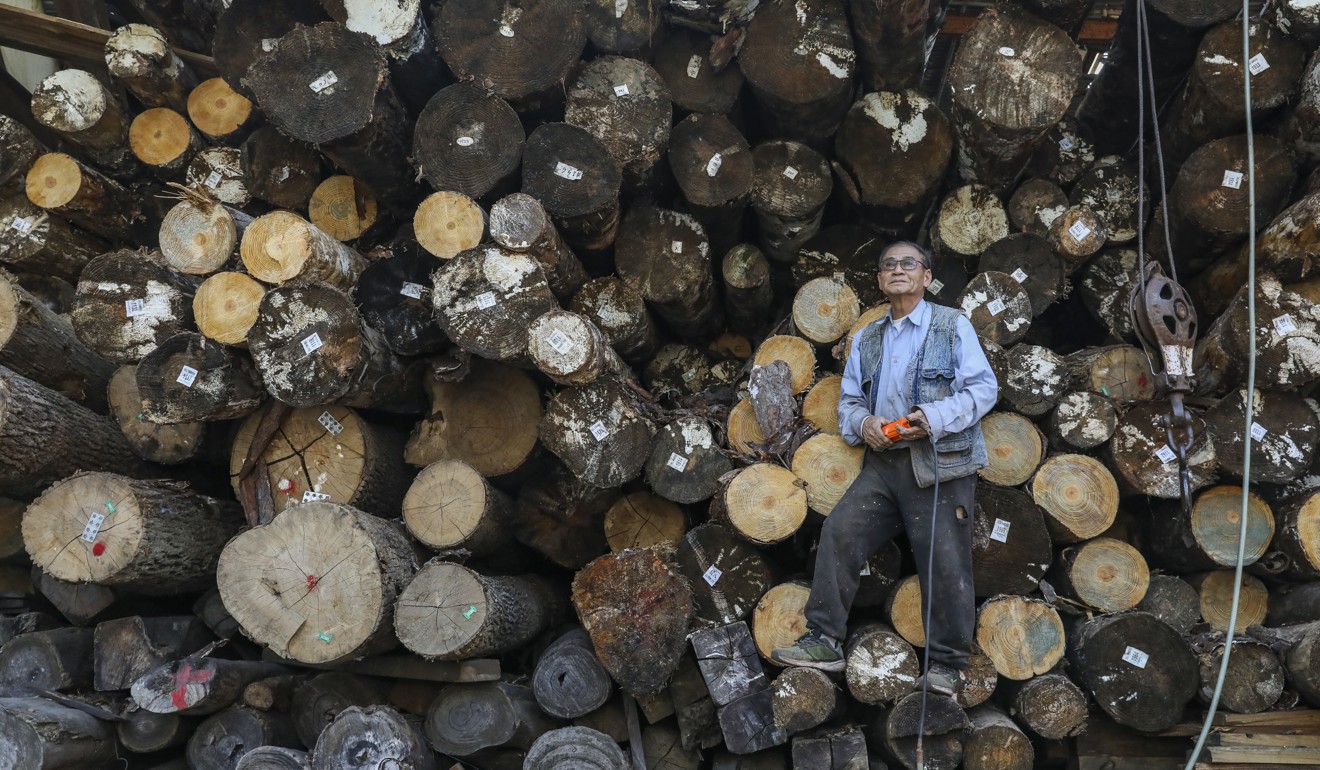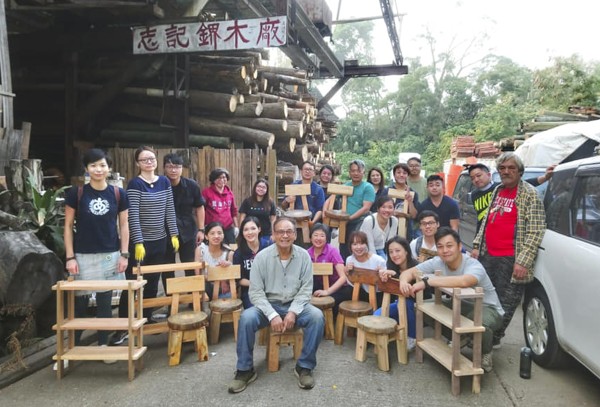Against the grain of Hong Kong development, can a sawmill live on in New Territories village intended for housing?
- In the second of a three-part series on the impact of a government new-town development plan on the affected rural areas in the city’s north, the Post spoke to the owner of a sawmill that is the last of its kind

The 10,000 sq ft plant, at least two floors high, was dim and cool like a thick forest, most of the sunlight blocked by huge piles of logs and wooden boards stacked from floor to ceiling.
Those hundreds of pieces of timber – at least 1,200 tonnes of wood – could all end up in Hong Kong’s overflowing landfills if the sawmill cannot be relocated, as it makes way for a government plan to develop new towns in the rural areas of Fanling North and Kwu Tung North.
“We hope the government can give us more time to process the timber; maybe two to three years,” said Wong Hung-kuen, the second-generation owner of Chi Kee Sawmill and Timber in Kwu Tung. “It’s better than throwing all the wood into landfill.”
It is the newest twist in Chi Kee’s long history. Founded in 1948, it has already moved five times – all due to government developments – between North Point, Chai Wan and its current home.
This time the mill will have to make way for housing and recreational facilities under the first phase of the new-town project. The initial redevelopment will also affect about 450 households, which face eviction starting from the second half of this year.
The developments as a whole will affect about 1,500 households, while creating 71,800 flats – 70 per cent of which are marked for affordable public housing.
Wong said he got a letter from the government last month telling him of the plan, and telling him officials would visit him in the second half of the year to discuss compensation.
According to the 70-year-old, Chi Kee is the only mill in the city still sawing logs, which are used in construction and temple and ancestral home renovation, or to make furniture or cargo containers.
The factory also hosts workshops, teaching people how to craft wood into tables and stools.
It is the only place that supplies large wooden planks of between two and six metres, which are crucial for supporting large air cargo such as heavy machinery. So its closure could set in motion a chain of industry reactions.

Hau Shing Chan Wooden Box Factory, which buys Chi Kee’s planks to sell to logistics companies and airlines, said its business would undoubtedly be affected if the supplier closes.
“If our clients are unable to buy the planks from us in Hong Kong, they may change their shipping routes and source the planks from mainland China instead,” said Hau Shing Chan owner Hanson So Hon-hang.
It’s hard to say what will happen in the long term. We just can’t compete with the prices in mainland China
So said he feared that if his factory lost its plank orders to mainland competitors, they might take away the factory’s other businesses, such as wooden crate orders.
“It’s hard to say what will happen in the long term. We just can’t compete with the prices in mainland China,” he said.
Severe competition from north of the border, and overseas, prompted the sawmill to look at cheap recycled wood for raw materials, according to Wong. Now about 80 per cent of Chi Kee’s wood is recycled, from sources such as used lamp posts and typhoon-felled trees.
Although the textile, toy and electronics industries formed the backbone of the city’s manufacturing-driven economy in the last century, wood-processing businesses also had a role to play.
Wong said the local sawing industry blossomed between the 1940s and the 1970s, when the migrant population boomed and wood was in high demand for building makeshift houses.

The sawmill used to import rainforest wood from northern Borneo, what is now Sabah state, Malaysia. But after China’s opening up in the late 1970s, cheap wood started to flood in from over the border. And since the 1990s, as people around the world became increasingly aware of environmental protection, rainforest wood has declined in popularity, and wood from Canada’s commercially grown timber forests became another cheap competitor.
All of this caused a precipitous decline in the city’s sawmills, Wong said.
“It’s a great miracle that we still survive until today,” he said.
“We have been doing our part for environmental protection. If we have to move our timber into the landfills, not only will we not be able to help the environment, we will even damage it. Such an arrangement is not very logical.”
Hahn Chu Hon-keung, director of environmental advocacy at conservation group Green Earth, said natural resources like timber could be reused and “do not belong in the landfill”. He urged the government to help Chi Kee relocate, noting the importance of the city having a continuous industry to process wood.
Some 330 tonnes of wood end up daily in the city’s increasingly stuffed landfills, accounting for 3.1 per cent of the city’s municipal solid waste.
The Development Bureau did not reply to requests for comment on the mill’s fate. A spokeswoman for the Environmental Protection Department said it encouraged Chi Kee “to make its best endeavours” to approach furniture makers and vocational institutions to absorb its stockpile, rather than sending it to the tip.

Chi Kee’s shutdown could also mean a loss of skills and technical know-how, said local artist Wong Tin-yan, who specialises in making sculptures from discarded wood.
“As more and more young people are increasingly interested in woodwork, even if they have the machinery, it is pointless if they are unable to learn from masters who have decades of experience,” Wong Tin-yan said.
Passing knowledge to the younger generation is the key reason factory owner Wong hopes the government can conserve his last-of-its-kind business. If it cannot, he said, he would try to rent a place nearby to keep the sawmill going. But he said that would be difficult.
“This is no longer a sawmill, but a landmark,” Wong said. “If we are no longer here, people can only know the industry from television or the internet. They will never be able to understand wood as we do.”